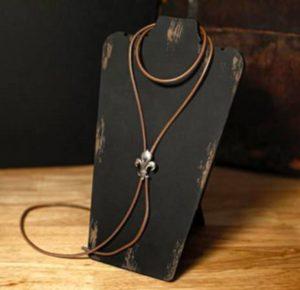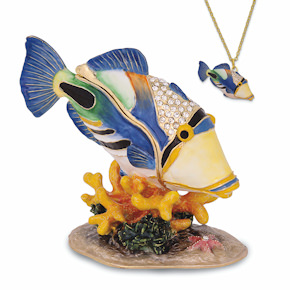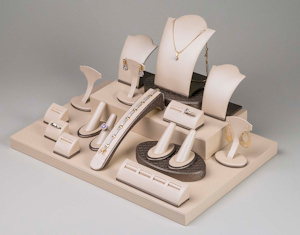Change of Scenery
Changing your merchandise displays helps to keep and attract customers with the promise of new perspectives on style and gift ideas. Re-merchandising your stock and moving it around on a regular basis allows your store to always look fresh to your customers.
 Categorize by product like bridal or color trends or seasonal /thematic styles. Set scenes and tell stories that move customers through your store. Retail displays are a strategic aspect of your business that can help attract customers, retain their interest, and increase sales. Visual merchandising helps to set you apart from your competition by creating a look and feel that is uniquely you.
Categorize by product like bridal or color trends or seasonal /thematic styles. Set scenes and tell stories that move customers through your store. Retail displays are a strategic aspect of your business that can help attract customers, retain their interest, and increase sales. Visual merchandising helps to set you apart from your competition by creating a look and feel that is uniquely you.
Think outside the box. Incorporate other accessories like shoes, scarves, purses and hats. Use a dress form layered with necklaces or pinned with brooches, pendants, charms, and earrings. Show how to stack bracelets, always changing the combinations. Create vignettes that tell stories. Your retail space has to be your most productive and efficient salesperson, and how you optimize that real estate for maximum revenue is through visual merchandising.
Visual Touchstones
Include signage and imagery, and digital touchpoints like looping videos, tablets to explore custom design options, or QR (Quick Response) codes to scan for rich product content. Customers tend to linger longer at such displays, notes consultant Andrea Hill for the Chicago-based Hill Management Group (known for StrategyWerx, SupportWerx, MentorWerx). “Not everyone wants to talk to a sales person. Layering the physical and virtual worlds in your display is great way to drive sales and promote your omni-channel message.”
There are ways to make digital technologies work together with a physical retail location, says Denise Cabrera, product manager, display and packaging for Rio Grande, a Richline brand in Albuquerque, New Mexico. “As more customers discover brands in a digital space, the retail store experience can complement and enhance that initial contact. Retail stores are finding ways to translate the cornerstones of the experience at their physical stores into a digital space and utilizing digital technologies to enhance their in-store experience.”
Displays are visual cues that trigger emotional responses, describes Kate Peterson, president of Performance Concepts, Montgomery Village, Maryland. She cites Florida designer Mark Loren, who partners with a local spa to promote his diamond toe rings and in turn the pedi one needs to show it off in beautiful images. She encourages jewelers to engage all of the senses from sight and sound to smell, touch and taste (sample/try on).
Concepts, Montgomery Village, Maryland. She cites Florida designer Mark Loren, who partners with a local spa to promote his diamond toe rings and in turn the pedi one needs to show it off in beautiful images. She encourages jewelers to engage all of the senses from sight and sound to smell, touch and taste (sample/try on).
Traditional & Unusual Mixing traditional display elements with non-traditional is an important design direction—think jewelry draped on unusual glass bottles, old books or whimsical pincushions. “The rising popularity in textured fabrics such as linen and burlap continues,” says Cabrera. “Natural tones are popular, but I also see growing demand for gray. Many brands are incorporating materials like wood and metal into their existing displays.”
Sharon Pisciotta for Quality Gold’s GemPak in Dallas, Texas cites a new trend for colorful tiles on top of risers, and bejeweled trinket boxes from its Luxury Giftware by Jere brand in motifs like animals, birds, fish, and seasonal icons that add something to the showcase and is a product that’s for sale. Imagine a pearl case detailed with exotic fish boxes.
Color also is key. “There’s a perception of jewelers that they’re stodgy and super formal, which may work for some, but that’s not reflective of today’s society,” says Hill. “The men’s smoking room look is dying out. Dark colors are not so popular, especially at a time when people are looking for hope and joy.”
Mike Kaplan for Rocket Redbox in the Elmsford, New York encourages creativity in translating color schemes and brand images in displays. “If black and white herringbone is part of your logo, you may not want to use it in your cases because it’s heavy and busy against the jewelry, but rather mix white and black display elements in the presentation to reinforce your image.” Work with the ombré range of shades in a color family or pop something unexpected and bright.
 Hill says a combination of in and above case presentations is important. “Anytime you can get jewelry into the hands of customers it’s a good thing. Individual loss on lower end items is worth being approachable.”
Hill says a combination of in and above case presentations is important. “Anytime you can get jewelry into the hands of customers it’s a good thing. Individual loss on lower end items is worth being approachable.”
Pisciotta reminds jewelers to evaluate the condition of their displays before major selling season. “Make sure your displays are clean and in good shape. Replace those that need it; they take a lot of wear and tear in and out of the case and the safe. Displays do not last for 20 years. If you get two years out of them you’re doing pretty well. Neck and ring displays probably take the most abuse.”
Success at retail is more about how you sell, not what you sell. Shopify cites some resources for visual merchandising ideas, including the retaildesignblog.net, creativitywindow.net, and Pinterest.










